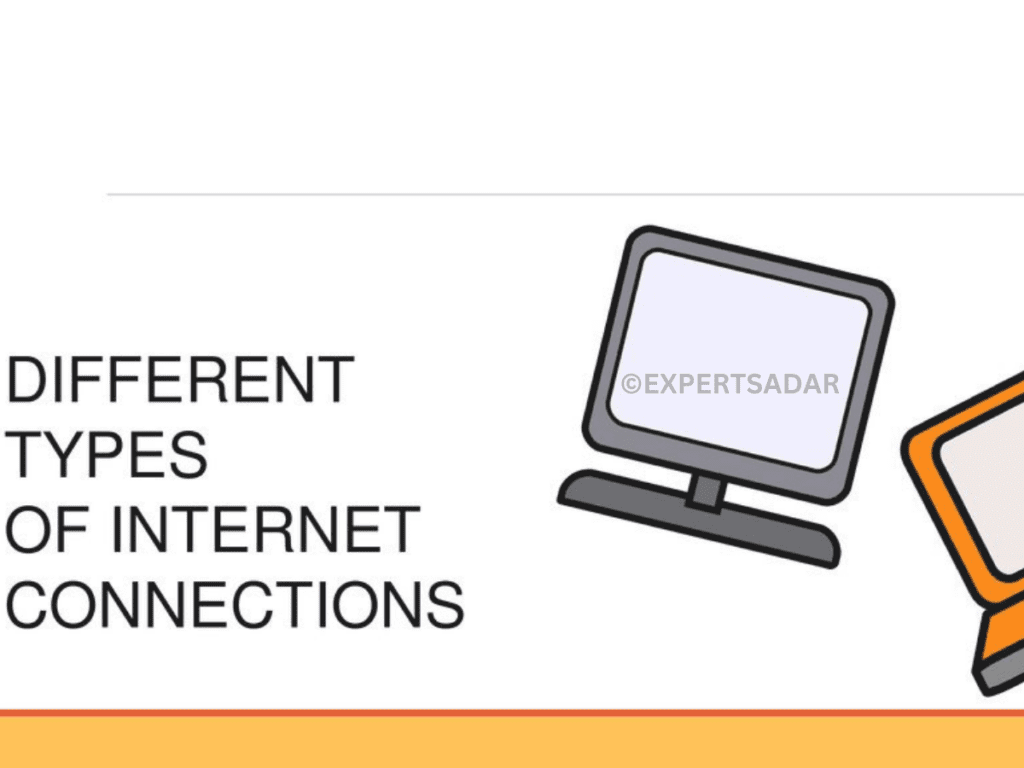Whether you’re setting up your home for the first time or trying to minimize the distractions of a movie night, learning about different types of Internet connections can go a long way. There are many types, from old-school telephones to high-speed fiber optic, each with advantages and disadvantages.
In this beginner’s guide, we’ll take a quick look at the different internet connections available. First, let’s review some basic concepts related to the Internet. Next, let’s understand the current and somewhat outdated types of Internet connections.
Types of Internet Connection
There are many links to the internet. All plugs have their speed and can be used for different purposes in the home or for personal use.
We shall talk about the many kinds of internet connections in this article.
Dial-Up Connection
A dial-up connection is established between your computer and the ISP’s server using a modem.
Dial-up connection is a cheap and traditional connection which is not popular nowadays as this type of connection is very rare.
To use an internet connection, we need to call the phone number of the computer, so we need a phone connection. A modem is needed when making calls to create a connection that acts as a backup between your computer and the phone line. Here we can use internet connection or phone at the same time.
Broadband Connection
Broadband means high-speed Internet access that is faster than a standard dial-up connection. Available by cable or phone. It does not require phone connection, so we can use phone and internet connection here at the same time. In this way, more than one person can access the Internet at the same time.
It is broadband data transmission using multiple signals and mode switching. The medium used for this communication is coaxial cable, optical fiber, radio or twisted pair cable.
DSL
DSL stands for Digital Subscriber Line. Provides access to the Internet through a telephone line (Internet). DSL is broadband that is always on and you don’t need to call a phone number to connect. A DSL connection uses a router to transmit data, and its connection speed varies between 128,000 and 8 Mbps, depending on the service offered. A DSL connection can transfer data at a speed of 5 million bytes per second or 5 Mbps.
DSL service can be provided simultaneously with landline service on the same telephone line in the high frequency band.
Cable
It is a type of broadband cable modem that can provide high speed internet connection. The speed of this connection is variable and may vary depending on the data flow or download. It provides access to the Internet through a cable modem and works with cable TV lines. The range of connection rates is 512k to 20Mbps.
Fibre Connection
The most popular and modern way to access the Internet is through fiber optic cables. The main advantage of mixing with fibers is less loss of strength. Traditionally, copper cables were used to connect to the network, but they are now being replaced by fiber optic cables. Fiber comes under broadband as it offers a maximum speed of 940 Mbps (megabits per second). These interfaces are ideal for use when multiple users are connected to a single device.

Cable Internet Connection
Internet connections use cables for network television instead of land lines. It also relies on broadband technology to provide Internet services. These sites still exist and are popular because they are cheap. Modems are used to separate digital and analog signals.
Satellite Connection
Satellite Internet links are popular in areas where landlines are not available. It only requires an antenna to receive the signal and a modem at the receiving end to connect to the Internet.
When using the antenna, the sky must be clear to receive the signal from the satellite.
Fixed wireless
Fixed wireless is uncommon, but useful if you want to choose the best provider in town. For example, if you live in an area with limited cable or DSL or live in a rural area without many Internet options, standard line is a good choice.
Wireless broadband LTE services are operated by mobile phone service providers and third parties. These services are usually ideal for bulk orders, such as RVs. Mobile Internet usually requires a special PC Card with an internal antenna connected to the laptop.
Mobile Internet offers slow download speeds ranging from hundreds of Kbps to several Mbps.
Digital Telephone Line
Understanding the Internet is important to appreciate the tremendous advances it has made in recent years and the ease with which it can be accessed. In the past, older networks relied on digital phone lines and required the use of network adapters rather than modems.
The Need for Speed
The need for speed has changed the options available to consumers and businesses in terms of how quickly and easily we can connect to the Internet. A lower link speed represents a faster frame rate during propagation. This will of course change over time, and Internet connection speeds will also vary between Internet Service Providers (ISPs).
Blog By:- ExpertSadar



